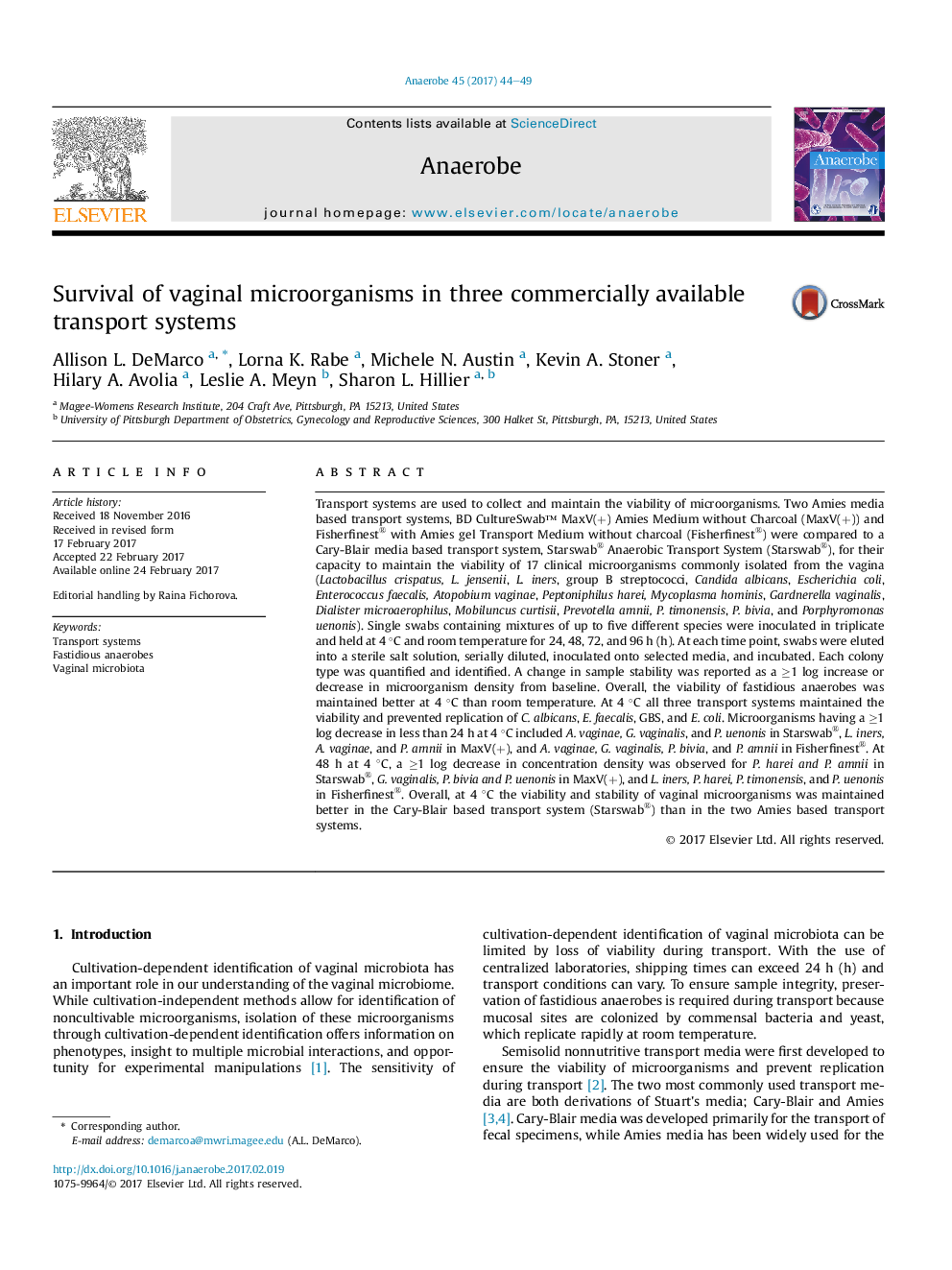| کد مقاله | کد نشریه | سال انتشار | مقاله انگلیسی | نسخه تمام متن |
|---|---|---|---|---|
| 5671377 | 1592819 | 2017 | 6 صفحه PDF | دانلود رایگان |
- Vaginal microorganisms have variable viability in transport media.
- Ideal transport temperature for vaginal microorganisms is 4 °C for â¤48 h.
- Starswab® preserved the viability of anaerobes better than Amies-based transport systems.
Transport systems are used to collect and maintain the viability of microorganisms. Two Amies media based transport systems, BD CultureSwab⢠MaxV(+) Amies Medium without Charcoal (MaxV(+)) and Fisherfinest® with Amies gel Transport Medium without charcoal (Fisherfinest®) were compared to a Cary-Blair media based transport system, Starswab® Anaerobic Transport System (Starswab®), for their capacity to maintain the viability of 17 clinical microorganisms commonly isolated from the vagina (Lactobacillus crispatus, L. jensenii, L. iners, group B streptococci, Candida albicans, Escherichia coli, Enterococcus faecalis, Atopobium vaginae, Peptoniphilus harei, Mycoplasma hominis, Gardnerella vaginalis, Dialister microaerophilus, Mobiluncus curtisii, Prevotella amnii, P. timonensis, P. bivia, and Porphyromonas uenonis). Single swabs containing mixtures of up to five different species were inoculated in triplicate and held at 4 °C and room temperature for 24, 48, 72, and 96 h (h). At each time point, swabs were eluted into a sterile salt solution, serially diluted, inoculated onto selected media, and incubated. Each colony type was quantified and identified. A change in sample stability was reported as a â¥1 log increase or decrease in microorganism density from baseline. Overall, the viability of fastidious anaerobes was maintained better at 4 °C than room temperature. At 4 °C all three transport systems maintained the viability and prevented replication of C. albicans, E. faecalis, GBS, and E. coli. Microorganisms having a â¥1 log decrease in less than 24 h at 4 °C included A. vaginae, G. vaginalis, and P. uenonis in Starswab®, L. iners, A. vaginae, and P. amnii in MaxV(+), and A. vaginae, G. vaginalis, P. bivia, and P. amnii in Fisherfinest®. At 48 h at 4 °C, a â¥1 log decrease in concentration density was observed for P. harei and P. amnii in Starswab®, G. vaginalis, P. bivia and P. uenonis in MaxV(+), and L. iners, P. harei, P. timonensis, and P. uenonis in Fisherfinest®. Overall, at 4 °C the viability and stability of vaginal microorganisms was maintained better in the Cary-Blair based transport system (Starswab®) than in the two Amies based transport systems.
Journal: Anaerobe - Volume 45, June 2017, Pages 44-49
